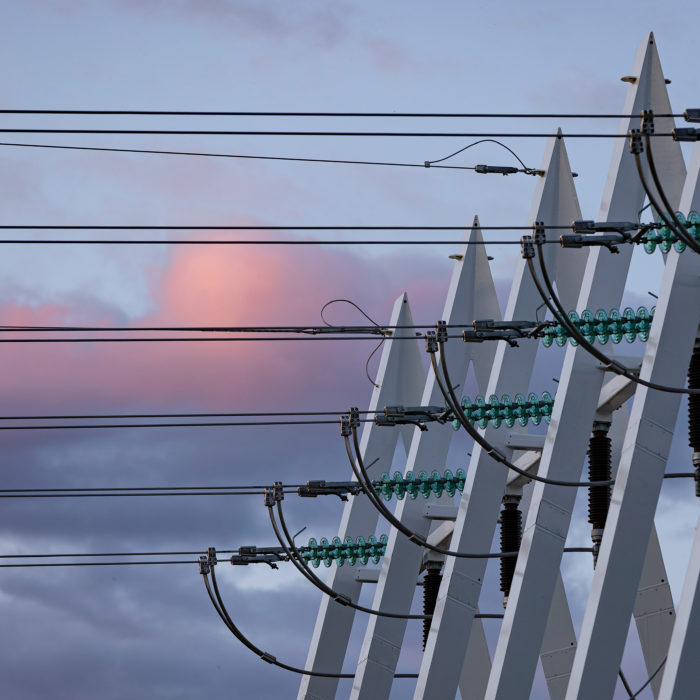According to Satu Viljainen, a Senior Advisor at Fingrid and a specialist in electricity markets and EU integration, transmission rights between Finland and Estonia are an example of this type of scenario.
“Another example from nearby markets is the connection between Denmark and Germany, where Denmark – an area of lower liquidity – was connected to the high-liquidity German hedging market with the help of transmission rights,” Viljainen says.
The liquidity of the electricity market refers to the market’s capacity to fulfil transactions rapidly and efficiently so that the swift completion of trades – including large trades – has little impact on the price. A sufficiently high level of liquidity is a characteristic of efficient markets: if liquidity is low, buying and selling can become difficult because there is little trading. Liquidity has a major impact on risk management and transaction costs.
Jim Vilsson, Senior Economist in charge of international electricity markets at the Danish transmission system operator, Energinet, says that parties operating in Denmark’s electricity markets have responded positively to the long-term transmission rights (LTTRs) introduced a few years ago.
“Long-term transmission rights enable better market liquidity and more efficient markets,” Vilsson says.
From laissez-faire markets to stricter regulation
The introduction of long-term transmission rights reflects the trend of deeper European integration which began in the 2010s and has led to a significant increase in the amount of regulation in the electricity market. The Nordic electricity markets were subject to relatively loose regulation for a long time, but the situation has now changed. Until now, Finland has been able to derogate from the granting of transmission rights because market parties have had good enough price hedging opportunities in the electricity market.
The Nordic electricity markets were built largely around laissez-faire market principles. “It is a prerequisite for an efficient electricity wholesale market that market parties have adequate opportunities to hedge against electricity price fluctuations. Ideally, the hedging options would be available on market terms,” Viljainen says.
The Energy Authority’s decision affirms that this will no longer be the case on the border between Finland and Estonia.
The situation at the cross-border transmission links between Finland and Sweden is unresolved
The question of whether there are adequate hedging opportunities for the cross-border transmission links between Finland and Sweden is unresolved. The Energy Authority needs to reach a decision on the matter together with the Swedish energy regulator. If the authorities fail to reach a consensus, the matter will be submitted to the European Agency for the Cooperation of Energy Regulators (ACER) for resolution.
The ability to grant transmission rights on the cross-border transmission links between Finland and the SE1 area of Northern Sweden would increase the hedging options available in Finland, as Finnish market parties would gain access to electricity price area differential (EPAD) products in the SE1 area, which has a generation surplus. Transmission rights are also highly suitable for situations in which it is necessary to connect adjacent areas with generating surpluses and deficits. •
Transmission rights increase the flexibility and agility of the electricity market
Jim Vilsson, Senior Economist at Energinet, says that parties operating in Denmark’s electricity markets have responded positively to the long-term transmission rights (LTTRs) introduced a few years ago.
“Although transmission system operators will incur expenses in granting LTTRs, the overall economic benefits outweigh the costs,” Vilsson says.
According to Vilsson, the focal point of transmission rights in Denmark will increasingly shift away from products entitling holders to physical electricity transmission over cross-border connections towards financial transmission rights (FTRs) over the next three to five years.
“Long-term transmission rights (LTTRs) enable better market liquidity and more efficient markets,” he says.
Renewable green energy, which is expanding its market share, will also give rise to greater fluctuations in the electricity price, and market parties expect a wider range of tools for hedging against electricity price fluctuations.
“Parties are looking for more agile solutions in addition to annual and monthly auctions. The best tool for enabling the development of dynamic, highly functional markets is open dialogue among market parties,” Vilsson says.
According to Vilsson, the Danish electricity market is currently in a stage of very effective development thanks to market parties working in collaboration.
“Beyond the national borders, different countries have different views on the extent to which market parties should be involved in development work,” Vilsson says.
In addition to cross-border connections with Sweden and Norway, Denmark is also connected to Germany and the Netherlands. An electricity transmission connection between Denmark and the UK is due to go live in 2024, emphasising the need to develop new LTTR products for the market.
“The UK electricity market is highly market-driven, and quarterly, weekly, weekend and seasonal FTR products are available. Dialogue between market parties and regulatory approval will be necessary in order for the same products to become available in the market via the DK-UK transmission connection,” Vilsson says. •





2 Responses
Very interesting news. Although I have some questions.
Is it LTTRs that will be issued and not EPADs between Finland and Estonia?
As the FCA is open for alternatives to LTTRs, what is the motive for introducing a new product rather than increase liquidity in the present EPAD products?
You say that Finnish market parties would gain access to EPADs in SE1 area, if a decision is taken, would it be EPADs in this case and not LTTRs?
What decides the volume of the issued products? Will this be connected to the minimum level of cross-border capacity availability to 70% as stated in the Regulation?
Hi Magnus!
Thank you for your feedback. Here are some answers to your questions:
It will be LTTRs between Finland and Estonia. The reason is that these were specifically requested by the Finnish and Estonian NRAs. The LTTR is an already existing product in the Baltic countries. The liquidity of the Baltic EPADs is low. The Finnish EPAD markets are seen as an EPAD hub from the Baltic perspective.
As regards to FI–SE1 border, the solution will depend on the decision of the Finnish and Swedish NRAs. This decision is still pending. In case the NRAs cannot agree, then ACER will decide. According to the FCA, the NRAs can request that either LTTRs are issued, or that other measures are taken if there are insufficient hedging opportunities.
The FCA has provisions concerning how to determine the amounts of products. The process starts form the long-term capacity calculation, after which the yearly and monthly amounts are determined using a specific splitting methodology (Article 16 of FCA). The splitting methodology is subject to NRA approval, and there will be a public consultation on it.
According to ACER Recommendation 1/2019, the 70% is not monitored in the long-term timeframe because Article 16(8) of Regulation (EU) 2019/943 only makes reference to CACM.
For more information, our contact person is: Satu Viljainen, satu.viljainen[at]fingrid.fi.